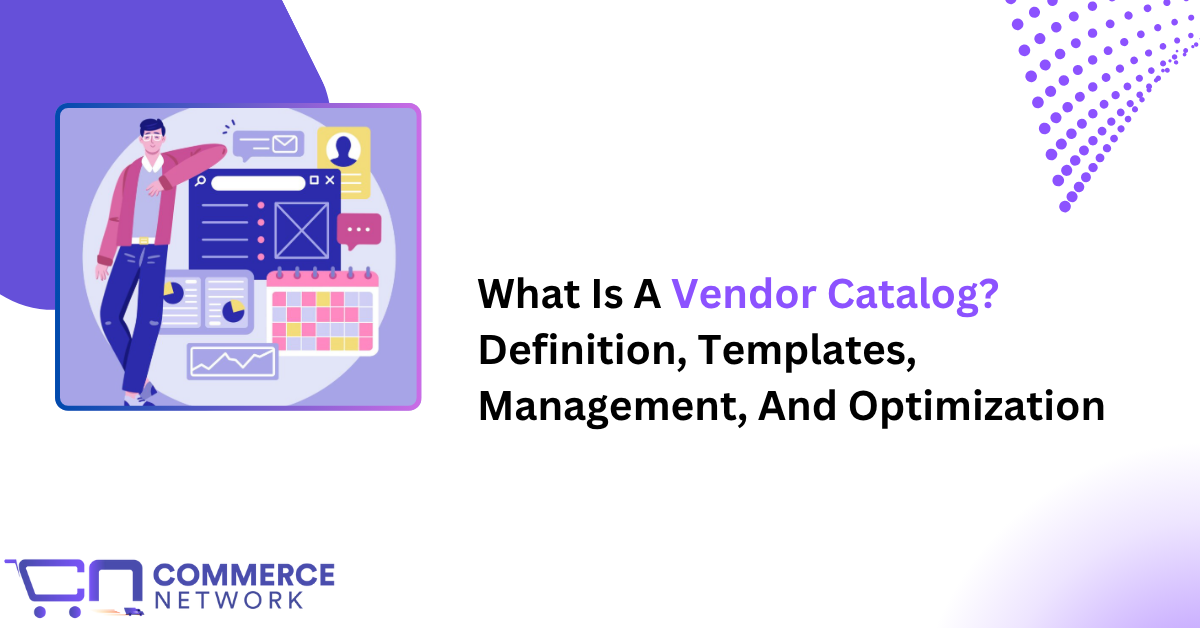
Vendor catalogs are terms that every business or government contractor needs to thoroughly understand. However, most people only have a surface-level understanding and do not delve too deeply into this.
Sometimes, this becomes a problem as most business operators who do business in retail, distribution, and warehousing need to have good supplier relationships. And a way to have a good supplier relationship is to know about their catalogs.
But what exactly is a vendor catalog? This article aims to explain that and more.
A vendor catalog is a structured collection of product or service listings provided by a vendor (or supplier) for buyers.
It includes item descriptions, SKUs, pricing, availability, technical specifications, shipping information, and other relevant metadata. These catalogs can exist in multiple formats: physical, PDF, Excel spreadsheets, XML, or digital databases integrated with procurement or eCommerce platforms.
In essence, a vendor catalog is the supplier's product inventory offered for sale, presented in a format that makes it easy for buyers to browse, evaluate, and purchase.
The terms "vendor catalog" and "supplier catalog" are often used interchangeably. Technically, both refer to the same concept: a collection of products or services listed by an entity that sells to businesses or consumers. The only nuance lies in regional or industry-specific preferences:
"Vendor" is commonly used in retail, e-commerce, and IT sectors.
"Supplier" tends to appear more in manufacturing, logistics, and government procurement.
For practical purposes, there's no difference. A supplier catalog is a vendor catalog.

A vendor catalog template helps standardize product listings. This ensures compatibility when integrating with ERP systems, eProcurement software, or online marketplaces. Here are the essential components usually included:
Some templates also include metadata for search engine optimization (SEO), barcodes (UPC, EAN), or special designations (e.g., Energy Star certified, GSA-approved).
Whether browsing a PDF catalog or an online marketplace, knowing how to find specific items can save hours of work. Here are a few tips:
Digital catalogs on platforms like GSA Advantage, Amazon Business, or SAP Ariba offer robust search capabilities that can filter down massive inventories into a few relevant items in seconds.
If you are a business that gets its items from multiple vendors, then you need a system that is not chaotic, optimized to your specific criteria, and is fast and efficient.
Commerce Network provides that and more. Here is exactly what Commerce Network provides for you in terms of vendor catalog management.
If you want to know in detail about the features of Commerce Network and how it can help your business, you can contact us.
Today’s vendor catalog is more than a static list. It’s a dynamic, data-driven ecosystem that connects buyers and sellers efficiently. Whether you’re a vendor aiming to sell through government portals, a supplier feeding data into Amazon, or a business managing listings from hundreds of sources, your catalog is your storefront. It needs attention, organization, and the right tools.
In a digital-first world, catalog management is not just a backend function; it’s a frontline strategy for revenue growth, customer satisfaction, and brand credibility.
Improve Your B2B, B2G, and B2C Ecommerce?
Integrate EDI For Efficiency, Compliance, and Scalability?
Just Curious About EDI?
Give Us A Call
202-280-7060